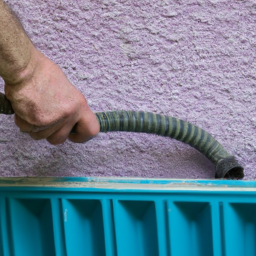How To Flush A Radiator With A Garden Hose
Table of Contents []
- How To Flush A Radiator With A Garden Hose
- Features of Flushing A Radiator With A Garden Hose
- Benefits of Flushing Your Radiator
- Pros & Cons of Flushing A Radiator With A Garden Hose
- Case Studies Of Flushing A Radiator With A Garden Hose
- FAQs On Flushing A Radiator With A Garden Hose
- Common Mistakes People Make When Flushing Radiators With A Garden Hose
- Best Practices for Flushing A Radiator With A Garden Hose
- Summary
How To Flush A Radiator With A Garden Hose
Flushing A Radiator With A Garden Hose: An In-Depth Guide
Maintaining your radiator is important to prevent your engine from overheating. Flushing your radiator with a garden hose is a straightforward way to ensure your radiator is clean and functioning. As we'll discuss below, this is an easy process to perform on your own that doesn't require special tools. Read on to get an in-depth look at how to flush a radiator with a garden hose.
Features of Flushing A Radiator With A Garden Hose
Flushing a radiator can help sustain the life of your radiator by removing grime and dirt. Additionally, the specialized treatments available (more on that further down) can help keep your radiator running at optimal levels. With some basic tools and elbow grease, you can get your radiator running as if it's brand new.
Benefits of Flushing Your Radiator
The primary benefit of flushing your radiator is extending the life of your radiator. It does this by cleaning away dirt and grime that might be contributing to inefficiencies. Additionally, people also flush their radiators to aid in cooling their engine, as a clogged radiator can prevent proper airflow. This can lead to the engine working harder than necessary, leading to increased wear. The last key benefit to flushing your radiator is this process is relatively simple and doesn't require any special tools.
Pros & Cons of Flushing A Radiator With A Garden Hose
As mentioned, flushing a radiator with a garden hose is fairly easy to do and has plenty of benefits. However, there are some key considerations to keep in mind. Here are the biggest pros and cons to flushing a radiator with a garden hose:
- Pros:
- Easy and relatively inexpensive
- Doesn't require special tools or materials
- Can greatly extend the life of your radiator
- Cons:
- Can take up to 3 hours from start to finish
- Doesn't remove all contaminants; some require special tools/machines
- Improperly done, it can lead to inefficiencies
Case Studies Of Flushing A Radiator With A Garden Hose
How successful has flushing a radiator with a garden hose been? Below are a few stories of people who have tackled this task and what they experienced.
- Dana from Indiana
- Vehicle: 2006 Honda Civic
- Task: Flush radiator with a garden hose
- Result: Dana is a car enthusiast who flushed their radiator at home. The process took around three hours and Dana reports that their radiator is performing at optimal levels now.
- Luke from Tennessee
- Vehicle: 2008 Dodge Caravan
- Task: Flush radiator with a garden hose
- Result: Luke was experiencing excessive engine wear that he suspected was caused by a clogged radiator. After flushing his radiator with a garden hose, the car runs much cooler and Wear is greatly reduced.
FAQs On Flushing A Radiator With A Garden Hose
- How often should I flush my radiator?
We recommend flushing your radiator every 18 months to two years. This can vary depending on the make and model of your vehicle, so be sure to follow your vehicle manufacturer specifications.
- What do I need to flush my radiator with a garden hose?
All you need is a basic radiator flush kit, a garden hose, and a rag. You may need additional items such as a screwdriver if you need to open up your radiator cap.
- How long does it take to flush a radiator with a garden hose?
This process can take anywhere from two to four hours, depending on the conditions of your radiator.
Common Mistakes People Make When Flushing Radiators With A Garden Hose
- Not having the correct tools. To flush your radiator with a garden hose, you need a basic radiator flush kit and a garden hose.
- Adding the wrong chemicals. Some people choose to add chemicals during the flush, but they need to be aware of the type of radiator they have as the wrong chemicals can cause major damage.
- Forgetting to check for radiator leaks after the flush. Even if the flush was successful, it's important to monitor your radiator for any signs of leaks.
Best Practices for Flushing A Radiator With A Garden Hose
- Always consult your vehicle manufacturer specifications prior to flushing your radiator.
- Check for leaks after the flush is complete.
- Throw away the used fluid correctly. Many areas have laws governing disposal, so make sure to read up on your local regulations.
- Start the engine and allow it to run for a few minutes. This helps flush out any remaining impurities.
- Be sure to wear safety gear such as gloves and glasses while flushing your radiator.
Summary
In summary, flushing your radiator with a garden hose is an easy and relatively inexpensive way to maintain the life of your radiator. With some basic tools and knowledge, you can get your radiator running like new. Remember to follow all safety precautions and read your vehicle manufacturer specifications prior to attempting this process. In doing so, you can maximize the life of your radiator and keep your engine running in optimal condition.

Previous Page
Next Page
